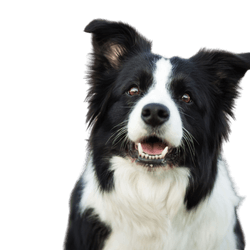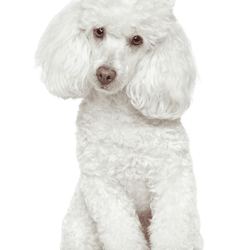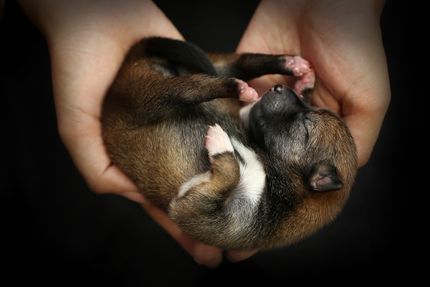Facts & Origin
Border Collie and Poodle in one
The Bordoodle - also known as the Border Doodle or Borderpoo - is a designer hybrid breed resulting from the deliberate crossing of a Border Collie with a Poodle (usually a Standard or Miniature Poodle). The aim of this combination was to unite the intelligence and willingness to work of the Border Collie with the allergy-friendliness and elegance of the poodle.
Breeding of the Bordoodle began in the last two decades or so, mainly in Australia, the USA and Great Britain, as a result of the increasing demand for intelligent, family-friendly and hypoallergenic mixed breeds. Both parents are considered to be extremely smart, adaptive and people-oriented - the combination of which should result in an active, loyal and versatile family dog.
Beware of name confusion!
A mix of Border Terrier and Poodle is sometimes referred to as a Borderpoo. So it's best to ask if you're not sure.
Criticism of the Bordoodle
As with many designer dogs, there is also criticism of the Bordoodle, especially from an animal welfare and cynological perspective. Although both parent animals come from controlled, recognized breeds, the Bordoodle itself is not an officially recognized dog breed, which means that breeding standards, health checks and temperament tests are not consistently adhered to everywhere.
A common misconception is that all Bordoodles are automatically hypoallergenic and easy to train. In reality, both coat structure and temperament can vary greatly, and not all dogs of this mix are suitable for allergy sufferers or beginners. The Border Collie in particular has a high willingness to work and exercise, which can be underestimated.
There is also criticism that many Bordoodles are bred without regard for temperament, genetics or health aspects - sometimes purely for commercial reasons. This can lead to behavioral problems as well as hereditary diseases.
Suitability of the Bordoodle
The Bordoodle is an extremely intelligent, eager to learn and social companion dog that is well suited to active, dog-experienced people and families, provided it is bred seriously and kept appropriately. They love exercise, brain games, challenges and a close bond with their caregivers.
This hybrid breed is usually highly adaptable and sensitive. It learns quickly and is very cooperative, but also needs clear leadership, structure and daily exercise - both physical and mental. The Bordoodle is ideal for:
Active families with an interest in dog training or dog sports
Owners with dog experience who offer the dog tasks and security
People who enjoy being active outdoors, hiking, jogging or cycling
Households with children (provided the dog is kept busy and has been well socialized)
For less active people, beginners or owners with little time, however, the Bordoodle is only suitable to a limited extent - because its intelligence and energy level require regular, thoughtful activity.
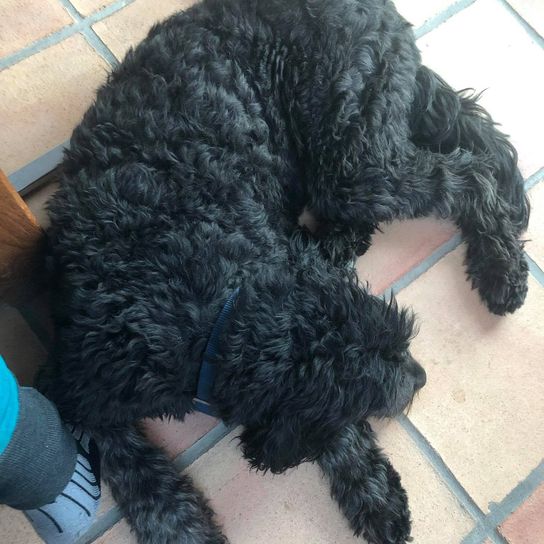
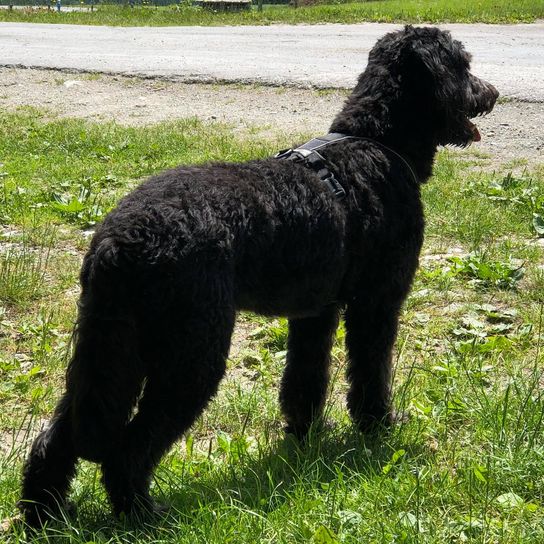
| Alternate Name | Borderpoo, Border doodle |
| Origin | UK - Germany |
| Life expectancy | 10 - 15 years |
| Care requirements | high-maintenance |
| Activity level | high - average to high |
| FCI group | not recognised |
| AKC group | not recognised |
| KC group | not recognised |
More Border collie mixes
More Poodle mixes
Attitude, character and temperament of the breed
Possible character traits of the Bordoodle
The Bordoodle is considered to be highly intelligent, eager to learn and people-oriented. As a rule, it combines the best characteristics of its parents: the Border Collie's eagerness to work and sensitivity and the Poodle's learning ability, elegance and friendliness.
This mixture makes him a particularly attentive, active and emotionally sensitive dog who reacts very strongly to the mood and behavior of his caregiver. Many Bordoodles build a close bond with "their humans" and are considered loyal, loving and social - even towards children and other dogs, provided they have been well socialized.
They typically have a strong urge to move and think: Bordoodles love mental challenges, trick training, nose work or dog sports such as agility, hoopers or obedience. If this energy is not channeled, the dog can quickly become underchallenged and restless - with corresponding undesirable behaviour such as barking, chewing or nervousness.
Character
Possible diseases of the Bordoodle
Although mixed breeds are often considered genetically more robust, the Bordoodle can be susceptible to hereditary diseases of both parents - especially if no health tests have been carried out during breeding.
Possible diseases in the Bordoodle:
Hip dysplasia (HD) - especially inherited from the Poodle or Border Collie
Progressive retinal atrophy (PRA) - a genetic eye disease
Epilepsy - can occur in both parents
Allergies and skin problems
Thyroid disease (hypothyroidism)
Autoimmune diseases
Behavioral problems due to underchallenge (e.g. nervousness, compulsive behavior)
Responsible breeding with genetic testing (e.g. for PRA, HD, ED) and a healthy lifestyle with sufficient exercise, mental activity and veterinary care can significantly reduce the risk of many of these problems.
This is what a Bordoodle can look like
The appearance of the Bordoodle can vary greatly depending on the parents and the distribution of genes. They are usually medium-sized dogs, with a shoulder height of around 40 to 55 cm and a weight of between 14 and 25 kg.
The body is often athletic, harmoniously built and strong, with an alert, expressive look. The eyes are usually medium-sized, dark and very lively. The ears can be either semi-erect, drooping or slightly tilted forward.
The coat is usually of medium to long length, soft, wavy or curly - depending on whether the Poodle or Border Collie is stronger. Many Bordoodles shed little or hardly at all and are therefore considered relatively allergy-friendly, but require regular brushing and possibly occasional trimming.
The coat colors are very diverse: black, white, brown, cream, grey, merle, tricolor or combinations - often with a pretty, individual pattern.
Overall, the Bordoodle looks like a mixture of elegance, energy and intelligence - a dog that stands out visually and also impresses with its versatility in behavior.
| Fur length | medium |
| Fur | flat coated - curly |
| Ear shape | Standing Ears - Floppy Ear |
| Tail | fanned out - lang |
| Anatomy | slim, sporty, slim, sporty |
| Size ♀ | 45 - 60 cm |
| Weight ♀ | 12 - 28 kg |
| Size ♂ | 45 - 60 cm |
| Weight ♂ | 14 - 28 kg |
| Suitable For | - |
Known Diseases
Epilepsy
Definition: Dog has epilepsy if, for example, at least two epileptic seizures occur more than 24 hours apart.
Eye diseases
Often occur with allergies and intolerances.
Cataract
Cataracts are still one of the most common causes of blindness, even in dogs.
Progressive Retinal Atrophy (PRA)
Progressive retinal atrophy (PRA) is a slowly progressive death of the retina in dogs.
Patellar problems
Problems with the Patellar can be a displacement or weak kneecap, which is one of the most common causes of lameness in dogs, also because of overweight.
FAQ
-
A Bordoodle is a mixed-breed dog created by crossing a Border Collie with a Poodle.
-
Bordoodles can range from small to large, depending on the size of the parents.
-
Border Collie and Poodle mixes are generally very intelligent, active and friendly dogs. They often excel in obedience and agility competitions.
-
Border Collie and Poodle mixes need plenty of exercise and should have an active lifestyle. They often enjoy activities such as swimming, fetch and frisbee.
-
Border Collie and Poodle mixes need to be groomed regularly to maintain their coat. They should be brushed a few times a week and may need to be clipped or trimmed occasionally.
